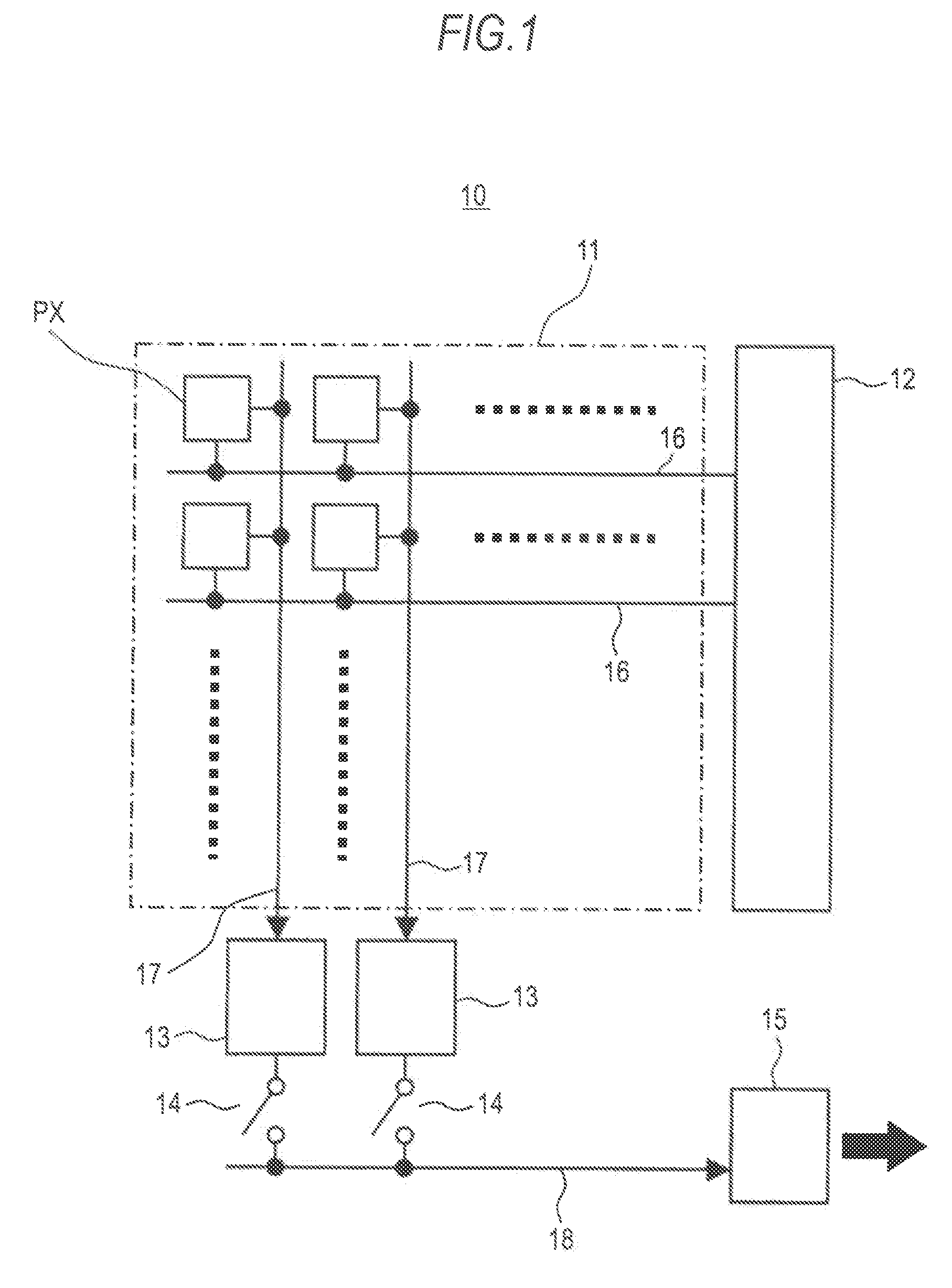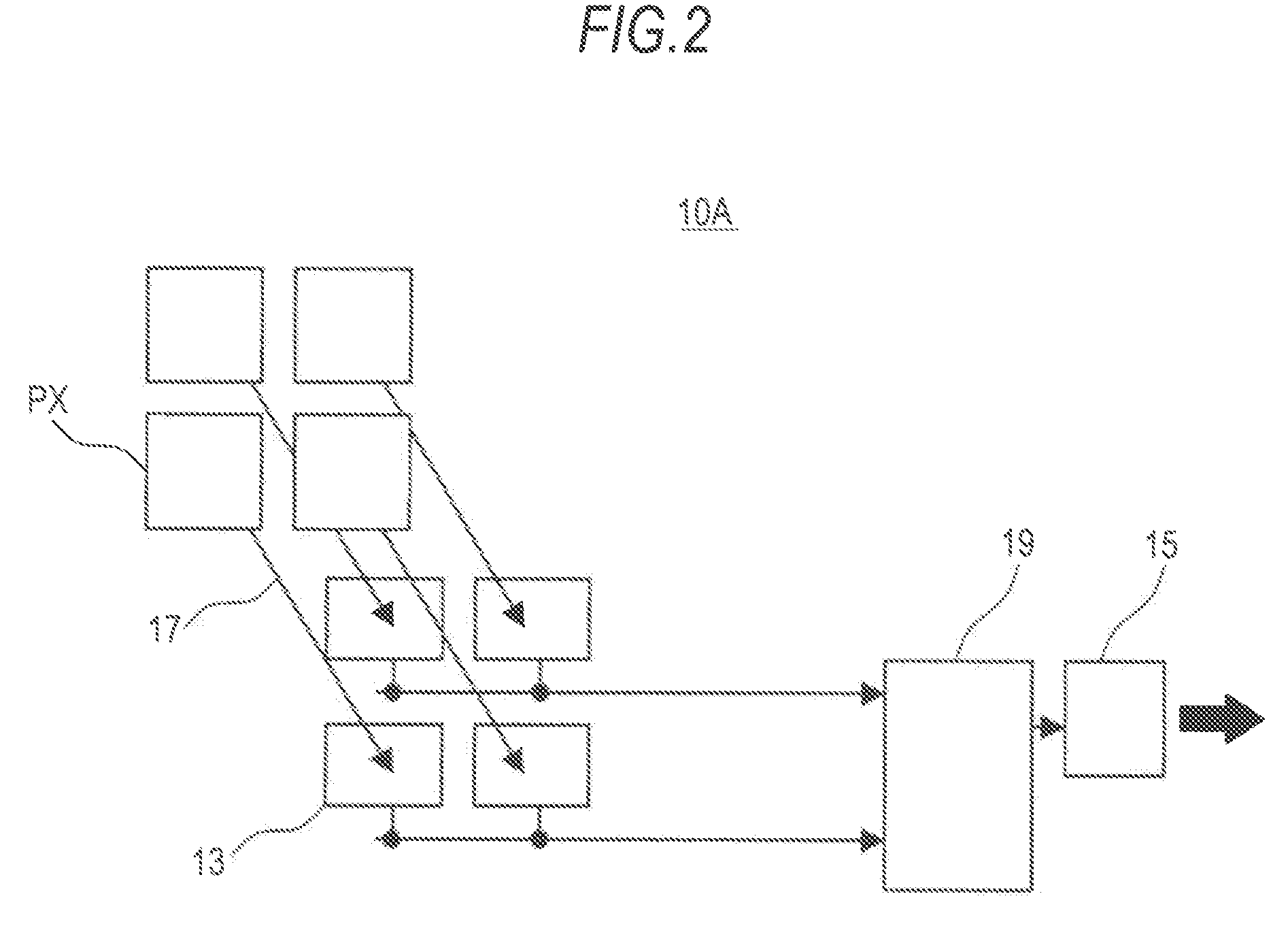Imaging device and camera system
a technology which is applied in the field of imaging device and camera system, can solve the problems of limited application of image sensor, high cost of transfer interface and chip for subsequent image processing, and significant difficulties in digitizing data, so as to improve imaging performance, eliminate analog signal processing, and reduce the number of apertures of pixels
- Summary
- Abstract
- Description
- Claims
- Application Information
AI Technical Summary
Benefits of technology
Problems solved by technology
Method used
Image
Examples
first embodiment
2. First Embodiment
[0111]FIG. 3 is a diagram showing an example of the configuration of a CMOS image sensor (imaging device) 100 according to the first embodiment of the invention.
[Outline of General Configuration]
[0112]The CMOS image sensor 100 CMOS image sensor 100 has an pixel array section 110, a sense circuit section 120, a group of output signal lines 130, a group of transfer lines 140, and a decision result IC section 150.
[0113]The pixel array section 110 has a plurality of digital pixels DPX laid out in a matrix form in the row direction and in the column direction.
[0114]Each digital pixel DPX has a photoelectric converting device, and has a function of outputting an electric signal according to an input photon.
[0115]The pixel array section 110 is formed on, for example, a first semiconductor substrate SUB1.
[0116]The sense circuit section 120 is formed on a second semiconductor substrate SUB2 different from the first semiconductor substrate SUB1.
[0117]The sense circuit secti...
second embodiment
3. Second Embodiment
[0223]FIG. 8 is a diagram showing an example of the configuration of a CMOS image sensor (imaging device) according to a second embodiment of the invention.
[0224]In the CMOS image sensor 100 according to the first embodiment, the individual pixels DPX correspond one to one to the sense circuits 121.
[0225]However, the spaces required for the pixels DPX and the sense circuits 121 should not necessarily be the same.
[0226]In addition, with the laminate of two substrates, the count circuits and memories which are large in size may be laid out outside the pixel array region in which fast and long distance transfer of data from each sense circuit 121 is essential, and is likely to be restricted by the layout.
[0227]A CMOS image sensor 100A according to the second embodiment provides a flexible solution to the above problem by allowing a plurality of pixels to share a single sense circuit.
[0228]In the CMOS image sensor 100A, a pixel array section 110A has a plurality of p...
third embodiment
4. Third Embodiment
[0387]FIG. 16 is a diagram showing an example of the configuration of a CMOS image sensor (imaging device) according to a third embodiment of the invention.
[0388]A CMOS image sensor 100B according to the third embodiment has a function of repeatedly executing binary decision on presence / absence of a photon input to a pixel in a predetermined exposure time, multiple times in a unit frame period, and integrating decision results to derive the amount of photons input to the light receiving section.
[0389]The CMOS image sensor 100B also has a function of variably setting the cycle period for decision within a plurality of cycle periods according to N times the unit cycle period (where N is an integer).
[0390]The CMOS image sensor 100B further has a mode of deriving the amount of photons input in the same unit frame period in fewer decisions in a long cycle period, and a mode of deriving the amount of photons input in many decisions in a short cycle period.
[0391]The CMOS...
PUM
 Login to View More
Login to View More Abstract
Description
Claims
Application Information
 Login to View More
Login to View More - R&D
- Intellectual Property
- Life Sciences
- Materials
- Tech Scout
- Unparalleled Data Quality
- Higher Quality Content
- 60% Fewer Hallucinations
Browse by: Latest US Patents, China's latest patents, Technical Efficacy Thesaurus, Application Domain, Technology Topic, Popular Technical Reports.
© 2025 PatSnap. All rights reserved.Legal|Privacy policy|Modern Slavery Act Transparency Statement|Sitemap|About US| Contact US: help@patsnap.com



